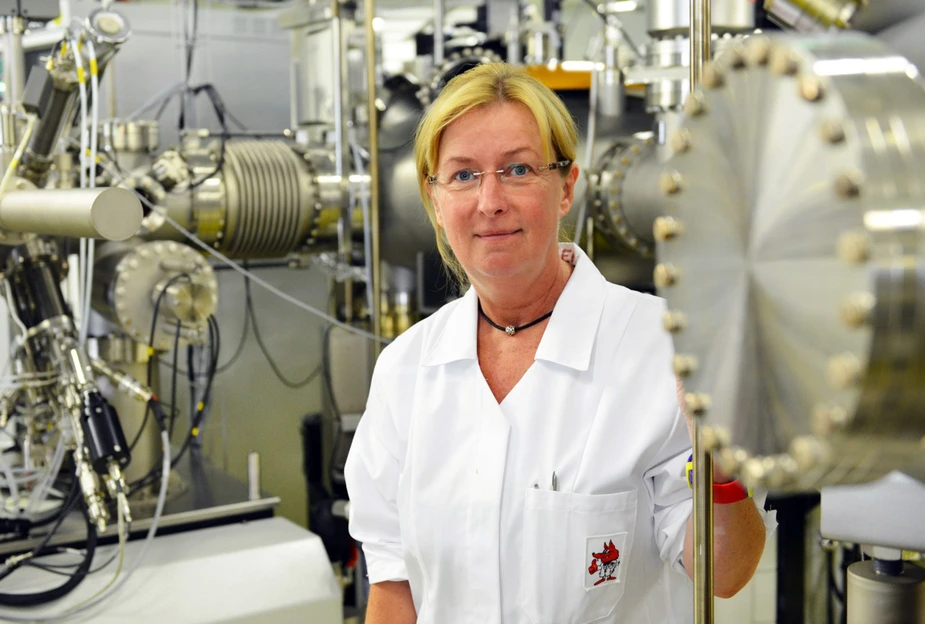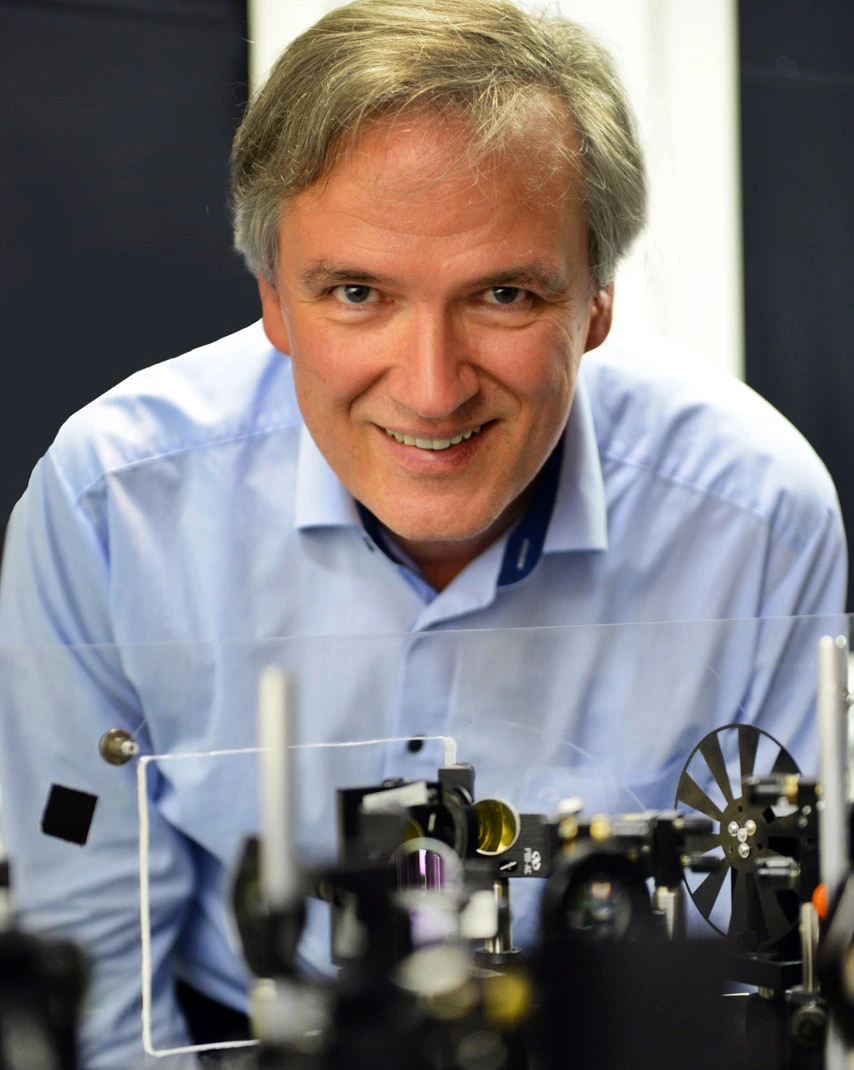25th Anniversary: Visions for the Future
Adlershof scientists sketch trends to their respective fields
The booming Science and Technology Park Adlershof has been managed by Wista from the start in 1991. To mark our 25th anniversary, our editor Paul Janositz has asked an Adlershof-based scientist and three of her colleagues to gaze into the crystal ball: what do they expect will happen in their respective fields and what are their individual professional goals?
Heat to Power
Simone Raoux. EMIL, SISSY and CAT are the names of the new laboratories, which are docked onto BESSY II, the synchrotron ring of the Helmholtz-Centre Berlin (HZB) in Adlershof. EMIL is currently being equipped with advanced x-ray analytics technology. “It serves to synthesise and examine probes without having to interrupt the ultra-high vacuum,” says Simone Raoux. The testing site SISSY is for examining materials for photovoltaics and thermoelectrics. The testing site CAT provides the means for research on catalysers.
After her PhD, Raoux spent 25 years working on spectroscopic and microscopic methods in the US. Since the beginning of 2014, she has been head of the HZB institute “Institute Nanospectroscopy for Design and Optimization of Energy-Relevant Materials”. She became full professor at Berlin’s Humboldt-Universität in September 2015.
With a team of 15 people, the physicist designs nanostructured systems and hybrid materials. She is particularly interested in thermoelectric materials which transform heat into power. This makes possible using waste heat from power plants or body heat to power pacemakers. Raoux’s aim is to get EMIL running as soon as possible and to create particularly powerful thermoelectric materials.
Scenes from a Cell
Thomas Elsässer. As one of three directors of the Max-Born-Institute (MBI), he is in charge of “Non-Linear Processes in Condensed Matter”. “We are interested in structures that change their form,” says the HU professor for experimental physics, who is 58 years old. Phase changes or chemical reactions happen on a femtosecond scale – a millionth of a billionth second. Using optical methods like infrared spectroscopy and x-ray diffraction, MBI researchers are already able to film how molecules or atoms swing from side to side. Electron changes are even faster. They happen in an attosecond, a billionth of a billionth second.
One of his goals is to measure electron density in crystals independent of time and space. Consequently, his work is currently focused on the development of suitable, laser-based x-ray methods. Elsässer hopes to extend these methods to biological processes in the years to come. How is energy generated and how is it stored? How does the cell interact with its environment? Elsässer is sure that the quantum optics practiced at the MBI will find the answers to these questions.
Effective Data Protection
Johann-Christoph Freytag. How does one maintain one’s individuality in a transparent or “see-through” society? This is an important issue to Johann-Christoph Freytag, a professor for computer science. Originally from Berlin, he studied in Hamburg before getting his PhD at Harvard in 1985. Since 1994, the 62-year-old researches databases and information systems at the HU. A field which has taken great steps in development thanks to the advent of big data technology.
”The digital marks we leave as individuals, groups, or organisations are so numerous that they can be traced back to us, as the creators, in a way that was unheard of in the past,” says Freytag. The enormous increase and the fall in price of data capacities make the data collecting mania economically attractive. It should be more important to the user to stay in control, especially with regard to sensitive areas including personal health or freedom of movement in the real and virtual world. This is facilitated by systems like “Tor”, which anonymise data online. More such technologies are needed in order to uncouple sender and receiver.
In view of these complex problems, it is to be expected that Freytag’s wish for a future full of interesting challenges in his field of “Privacy and Data Management” will come true.
Recycling using Light
Stefan Hecht. Even as a child at school, the professor for organic chemistry saw light as an illuminating medium in every sense of the word. Today, as head of a working group with 30 employees, light is still his main tool: one that is available and precisely controllable in order to control certain reactions. Using molecules as tiny building blocks, he can build nanostructures. “Ambivalent molecules are our strength. They can be transformed using light and used to control processes,” says Hecht. This enables him to build transistors and storage elements that are flexible and light.
The 42-year-old predicts that chemistry will develop much more efficient batteries and significantly improve the storage of renewable energy in the next ten years. Moreover, he banks on sustainable plastics, which are recycled using light, instead of burning them. There will be adaptive materials, able to adapt to their environment and the weather, while generating energy, and self-healing materials which require no more than beams from a lamp for repair. In the long-term, Hecht’s aim is to use light to switch the “body’s molecular machines”, for example, ribosomes, but also drugs in the body.



